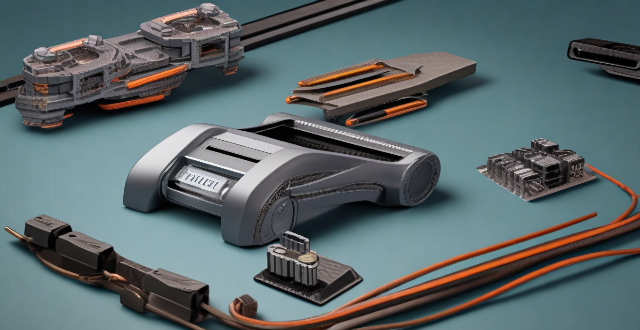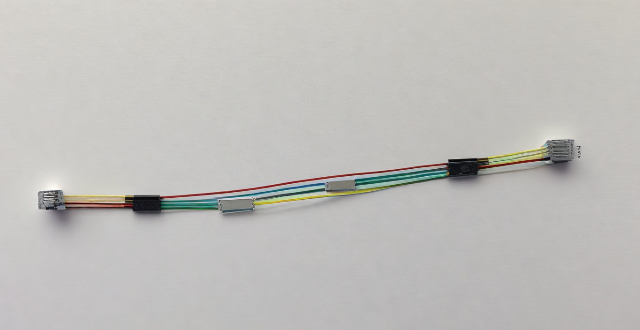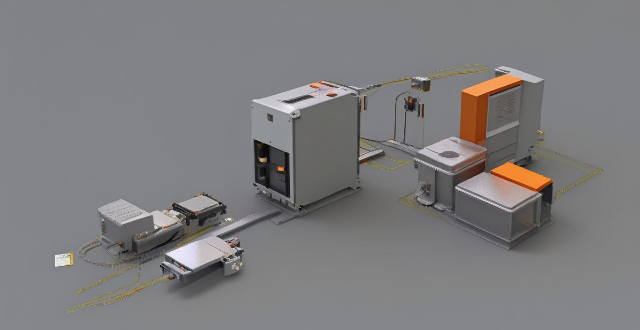Work Electrical

What are the safety regulations for electrical work ?
Electrical work involves a high level of risk, and it is essential to follow strict safety regulations to prevent accidents and injuries. Here are some of the key safety regulations for electrical work: - Always wear appropriate personal protective equipment (PPE), such as insulated gloves, safety glasses, and non-conductive shoes. - Turn off the power before starting any electrical work, and use a lockout/tagout system to prevent accidental energization of equipment. - Use insulating materials and tools designed for live work when working near live circuits. - Assess confined spaces for potential hazards before entering and use ventilation systems to maintain safe air quality. - Only qualified personnel should work with high voltage circuits, using specialized tools and following specific procedures for testing and inspection. - Know emergency procedures, including the location of emergency equipment and how to call for help.

What are the best practices for working with electrical panels and switchboards ?
Electrical panels and switchboards are crucial components of any electrical system, and working with them requires utmost care and attention to detail. Here are some best practices for ensuring safety and efficiency while working on these systems: 1. Understand the system you're dealing with before starting any work. 2. Always turn off power to the panel or switchboard before beginning any work. 3. Use proper tools and equipment, including insulated tools, gloves, and other protective gear. 4. Implement lockout/tagout procedures to prevent accidental energization of the equipment. 5. Work with a partner whenever possible, especially when working with high voltage systems. 6. Inspect the equipment before starting any work, looking for signs of damage, wear, or corrosion. 7. Test the system before re-energizing it after completing your work. 8. Keep detailed records of the work you've done, including what was done, when it was done, and any issues that were encountered. 9. Stay up-to-date on electrical regulations and standards that could affect how you work with electrical panels and switchboards. 10. Attend seminars, workshops, and other training events to maintain your skills and stay safe while working with electrical systems.

What are the OSHA standards for electrical safety in the workplace ?
OSHA has established standards for electrical safety in the workplace to protect employees from hazards associated with electricity. These standards cover training, lockout/tagout procedures, arc flash hazard protection, grounding and bonding, and maintenance of electrical wiring and equipment. Specific requirements vary depending on the type of workplace, such as construction sites, industrial settings, and office environments. By following these standards and implementing appropriate controls, employers can create a safe work environment and reduce the risk of electrical accidents and injuries.

How can I ensure electrical safety in my home ?
Electrical safety is crucial for maintaining a secure home environment. Hire licensed electricians, schedule inspections, keep appliances clean, avoid overloading outlets, be cautious around water, childproof your home, use proper lighting, keep flammable materials away from electrical appliances, and know how to shut off power in emergencies.

What are the basic principles of electrical safety ?
Electrical safety is crucial in daily life, especially with modern technology. Basic principles include understanding electricity, maintaining equipment, using appropriate tools, avoiding direct contact with electricity, keeping away from water, following proper wiring practices, being cautious with extension cords, checking for overheating, and knowing your limitations. Following these principles can prevent accidents and ensure safe use of electrical devices.

What should I do if I encounter an electrical fire ?
In the event of an electrical fire, it is important to stay calm and assess the situation. If possible, turn off the power source causing the fire and use a Class C fire extinguisher. Call for help if the fire cannot be controlled or is spreading rapidly. Evacuate the area quickly and safely, avoiding elevators. Never use water to try to put out an electrical fire, as it can cause electrocution. Keep a safe distance from the fire and follow up with professionals to inspect and repair any damaged electrical systems.

How can I prevent electrical shocks in the workplace ?
To prevent electrical shocks in the workplace, it's crucial to understand risks, use proper equipment, follow safe work practices, provide training, maintain cleanliness, report faulty equipment, and stay informed. Specific actions include identifying hazards, using insulated tools, implementing lockout/tagout procedures, conducting regular inspections, ensuring employee training, and promptly repairing or replacing damaged equipment.

What are some common electrical hazards ?
Electrical hazards are a common occurrence in homes, workplaces, and public areas. They can cause serious injuries or even death if not handled properly. Here are some of the most common electrical hazards: ## Overloaded Circuits An overloaded circuit occurs when too many appliances are plugged into a single outlet or circuit. This can cause the circuit to overheat, leading to a fire. It is important to distribute the load across multiple outlets and avoid using extension cords as permanent solutions. ## Faulty Wiring Faulty wiring is another common electrical hazard. This can occur due to poor installation, wear and tear, or damage to the wires. Faulty wiring can cause short circuits, sparks, and electrical shocks. Regular inspections and maintenance by a licensed electrician can help prevent this hazard. ## Water and Electricity Water and electricity do not mix. If water comes into contact with electrical devices or wiring, it can cause electrocution or electrical fires. It is important to keep electrical devices away from water sources and ensure that all electrical appliances are properly grounded. ## Ungrounded Outlets Ungrounded outlets lack a third prong that grounds the outlet to the earth. This can lead to electrical shocks and increase the risk of electrical fires. It is important to have all outlets in your home or workplace grounded for safety. ## Damaged Cords and Plugs Damaged cords and plugs are also common electrical hazards. If a cord is frayed or cracked, it can expose live wires and cause electrical shocks. Similarly, damaged plugs can cause sparks and short circuits. It is important to replace damaged cords and plugs immediately. ## Improper Use of Extension Cords Extension cords should only be used temporarily and never as a permanent solution for powering appliances. Overloading an extension cord can cause it to overheat and start a fire. It is important to use extension cords sparingly and ensure they are rated for the amount of power being drawn through them.

How often should I have my electrical system inspected ?
Electrical system inspections are crucial for ensuring the safety and functionality of your home or business. The frequency of these inspections depends on various factors such as the age and type of property, recent changes, and local regulations. For residential properties, it is recommended to have your electrical system inspected every 5-10 years, but more frequently if you notice any signs of trouble or live in an older home. Commercial properties should have their electrical systems inspected annually due to higher usage and demand. Regular safety checks are also essential for commercial properties to comply with local regulations and protect employees and customers from potential hazards. It is always better to err on the side of caution and schedule regular inspections to maintain the safety and functionality of your electrical system.

How do I properly use and maintain electrical equipment ?
Electrical equipment requires proper use and maintenance to ensure safety, efficiency, and longevity. Key tips include reading the manual, inspecting before use, avoiding overloading, keeping away from water, cleaning regularly, checking wiring, replacing parts as needed, storing properly, unplugging when not in use, using surge protectors, and avoiding DIY repairs for significant issues. Following these guidelines helps extend the lifespan of electrical equipment and minimizes risks associated with their use.

How can I protect my children from electrical hazards ?
The text provides a comprehensive guide on how parents can protect their children from electrical hazards. It emphasizes the importance of education, preventative measures, emergency response, and parental supervision in ensuring electrical safety for kids. The key steps include teaching children about electricity using simple language and visual aids, role-playing safe vs. unsafe scenarios, covering all outlets with plugs or surge protectors, childproofing the home by securing loose wires and unplugging devices when not in use, proper placement of devices away from water sources, regular inspections for faulty wiring, learning first aid including CPR training, keeping emergency numbers handy, supervising young children around electrical devices, and setting rules and boundaries regarding electrical safety. By following these guidelines, parents can significantly reduce the risk of electrical hazards affecting their children, emphasizing that vigilance and proactive measures are crucial for maintaining electrical safety in the family.

How does fiber optic broadband work ?
Fiber optic broadband is a high-speed internet connection that uses fiber-optic cables to transmit data. It works by converting electrical signals into light signals, which are then sent through the fiber-optic cables. The process involves conversion of electrical signals to light signals using a modem, transmission through fiber-optic cables, amplification of light signals using optical amplifiers, and conversion back to electrical signals using another modem. Fiber optic broadband offers several advantages over other types of internet connections, including higher speeds, greater bandwidth, improved reliability, and longer transmission distances.

How does a multi-motor drive system work ?
The text explains how a multi-motor drive system works, its components, and benefits. It describes the process of power conversion, control signals, motor operation, mechanical transmission, and feedback adjustment in such systems. The advantages include improved efficiency, increased redundancy, and enhanced control.

What are the typical故障 of an internal rotor motor, and how can they be fixed ?
Overheating, bearing failure, electrical problems, mechanical wear and tear, and improper installation are common issues with internal rotor motors. Fixes include ensuring proper ventilation and lubrication, replacing worn parts, seeking professional assistance for electrical and installation issues, and regular maintenance to prevent premature failure.

How do I safely dispose of old or damaged electrical devices ?
This comprehensive guide outlines steps for safely disposing of old or damaged electrical devices, including identifying the type of device, checking with the manufacturer, contacting local authorities and recycling centers, donating or selling still-functional devices, properly packaging and transporting devices, considering environmental impacts, and avoiding harmful disposal methods.

How does a lead-acid battery work ?
Lead-acid batteries work on the principle of converting chemical energy into electrical energy and vice versa. They consist of an electrolyte, plates, and separators. During charging, an external power source applies a voltage higher than the open-circuit voltage of the battery, causing lead sulfate on the positive plate to be converted back into lead dioxide and on the negative plate into metallic lead. During discharging, when a load is connected to the battery, lead dioxide on the positive plate is reduced to lead sulfate, and metallic lead on the negative plate is oxidized to lead sulfate. The electrons flow from the negative terminal of the battery to the load during discharging and from the positive terminal of the external power source to the positive plate of the battery during charging.

How does solar energy work ?
Solar energy is generated through the use of solar panels containing photovoltaic cells, which convert sunlight into electricity via the photovoltaic effect. This process involves absorbing sunlight, exciting electrons to a higher energy level, generating an electrical current, collecting it, and converting it into usable AC electricity. Solar energy is renewable, sustainable, cost-effective, and environmentally friendly, but its effectiveness can be reduced by weather conditions, and it requires additional equipment for energy storage. Despite high upfront costs, solar energy systems can lead to long-term savings on utility bills.

What are the legal requirements for health and safety training on a construction site ?
Legal Requirements for Health and Safety Training on a Construction Site: - Regulatory Bodies: OSHA, EPA, DOL - Types of Training: HAZWOPER, Confined Space Entry, Fall Protection, Electrical Safety, Scaffold Safety - Frequency of Training: Annual refresher courses, on-site training sessions before starting work, regular toolbox talks during work hours - Best Practices: Implementing a safety culture, providing adequate equipment and facilities, conducting regular safety meetings.

How do electric transportation systems work ?
Electric transportation systems are at the forefront of modern transportation development, focusing on integrating electrical power into various modes of transport. These systems aim to provide efficient, sustainable, and environmentally friendly alternatives to traditional fossil fuel-based transportation. Here's a detailed breakdown of how electric transportation systems work: ### Power Sources and Batteries The heart of any electric transportation system is its power source, typically batteries. These batteries store energy that can be used to power electric motors. The type of battery and its capacity determine the range and efficiency of the vehicle. Common types include lithium-ion, nickel-metal hydride, and lead-acid batteries. Charging these batteries can be done through plug-in charging stations or, in some cases, wireless charging systems. #### Key Components: - **Battery Pack**: Stores and supplies energy. - **Charging System**: Replenishes energy in the battery pack. - **Energy Management System**: Optimizes energy usage and manages battery health. ### Electric Motors and Drivetrains Electric motors convert electrical energy into mechanical energy, propelling the vehicle. There are several types of electric motors used in transportation, including AC induction, permanent magnet synchronous, and brushless DC motors. Each has its own advantages in terms of efficiency, power density, and control simplicity. #### Key Components: - **Electric Motor**: Converts electrical energy to mechanical motion. - **Power Electronics**: Controls the flow of electricity to the motor. - **Drivetrain**: Transmits power from the motor to the wheels. ### Energy Efficiency and Regenerative Braking Many electric transportation systems are designed with energy efficiency in mind. One key technology is regenerative braking, which captures energy normally lost during braking and uses it to recharge the battery. This not only extends the range of the vehicle but also reduces wear and tear on brake systems. #### Key Components: - **Regenerative Braking System**: Captures kinetic energy during braking. - **Energy Storage**: Stores recovered energy for later use. ### Control Systems and Software Control systems and software play a crucial role in managing the complex interactions between the battery, motor, and other components. Advanced algorithms optimize performance, extend battery life, and ensure passenger comfort and safety. #### Key Components: - **Vehicle Control Unit**: Central computer that manages all vehicle functions. - **Sensors and Actuators**: Provide feedback and implement control commands. ### Infrastructure and Standards The infrastructure supporting electric transportation includes charging stations, maintenance facilities, and communication networks. Standards are also essential for interoperability and safety, covering areas like charging protocols, data exchange formats, and vehicle safety requirements. #### Key Components: - **Charging Stations**: For replenishing energy storage. - **Communication Networks**: For data exchange between vehicles and infrastructure. - **Maintenance Facilities**: For servicing electric vehicles. ### Future Developments and Innovations Researchers and engineers are constantly exploring new technologies to improve electric transportation systems. Areas of active research include solid-state batteries, ultra-fast charging systems, autonomous control algorithms, and integration with renewable energy sources. #### Key Components: - **Solid-State Batteries**: Promise higher energy densities and faster charging. - **Ultra-Fast Charging**: Reducing charging times to minutes rather than hours. - **Autonomous Driving**: Enhancing safety and efficiency through automated driving systems.

How does an electronic speed controller work ?
An electronic speed controller (ESC) regulates the speed of an electric motor by controlling the electrical power sent to it. It receives a signal, typically a pulse-width modulation (PWM) signal, which it interprets as a desired speed for the motor. The ESC then converts this low-power signal into a high-power electrical current that can drive the motor. By adjusting the duty cycle of the PWM signal, the ESC controls the motor's speed and torque. It also includes features such as overcurrent protection and cooling to ensure reliable operation. Some ESCs even have a feedback loop to monitor the actual speed of the motor and adjust the power output accordingly.

What are the warning signs of an overloaded electrical circuit ?
Warning Signs of an Overloaded Electrical Circuit include flickering lights, warm or hot outlets and switches, burning smell, tripped circuit breaker or blown fuse, dimming or fading lights, buzzing sounds, and appliances not working properly. These signs indicate excessive current flow in the circuit, which can lead to damage and potential fire hazards. It is important to consult a licensed electrician for inspection and necessary repairs if you suspect an overloaded circuit.

How does a lithium-ion power battery work ?
Lithium-ion power batteries work through the movement of lithium ions between the anode and cathode during charging and discharging, generating an electrical current to power devices. The process involves intercalation and deintercalation of ions in the electrodes, facilitated by an electrolyte and separator. Safety mechanisms and lifespan are key considerations for these widely used batteries.

How do zinc-carbon batteries work ?
Zinc-carbon batteries are primary, single-use batteries that generate electricity through a chemical reaction involving zinc and carbon. Their construction includes an anode of zinc, a cathode of manganese dioxide mixed with carbon, an electrolyte, a separator, and a container. When in use, zinc is oxidized at the anode, releasing electrons and zinc ions, while the cathode accepts electrons and reduces manganese dioxide. This flow of electrons creates an electrical current. Over time, the battery discharges as the materials are used up, requiring replacement. Proper disposal is crucial to prevent environmental pollution from their heavy metal components.

What is a drive motor and how does it work ?
A drive motor, also known as a motor or electric motor, is a device that converts electrical energy into mechanical energy. It operates on the principle of electromagnetism, using magnetic fields to produce motion. Drive motors are used in various applications such as transportation, industrial machinery, and consumer electronics. The working principle of a drive motor is based on **electromagnetic induction**, which refers to the process of generating an electric current within a conductor when it is exposed to a changing magnetic field. In a typical AC (Alternating Current) motor, a rotating magnetic field is created inside the motor using multiple coils of wire connected to an alternating current source. The alternating current causes the direction of the magnetic field produced by each coil to change continuously. As these fields change, they create a rotational force called **torque**, which turns the motor shaft. The interaction between the rotating magnetic field and the stationary part of the motor generates motion. This movement can be harnessed to perform work, such as driving a fan blade or lifting weights. The components of a drive motor include the stator, rotor, bearings, windings, commutator (in DC motors), and shaft. There are several types of drive motors, including DC Motors, AC Motors, Stepper Motors, and Servo Motors. Each type has its advantages and disadvantages, making it suitable for specific applications based on factors like efficiency, size, cost, and control complexity.

How does Smart Grid Technology work ?
Smart grid technology is a modernized electrical grid that uses digital communication technologies to optimize the delivery of electricity. It integrates advanced metering infrastructure, distributed energy resources, and communication networks to detect and react to changes in the power system. The key components of smart grid technology include advanced metering infrastructure (AMI), distributed energy resources (DERs), and communication networks. The benefits of smart grid technology include improved reliability, enhanced efficiency, increased resilience, better integration of renewable energy, and consumer empowerment. By optimizing the distribution of electricity based on demand patterns and available resources, smart grids reduce energy losses and improve overall efficiency. Distributed energy resources provide backup power during outages or extreme weather events, making the grid more resilient to disruptions. With real-time access to their energy usage data, consumers can make informed decisions about their energy consumption and potentially save money on their bills.

How do electric car batteries work ?
Electric car batteries are the powerhouse of electric vehicles (EVs). Here's a detailed explanation: 1. Basics of an Electric Car Battery 2. Charging Process 3. Discharging Process (Driving the Car) 4. Battery Management System (BMS) 5. Benefits and Challenges

How does an electromagnetic motor work ?
The article provides a comprehensive overview of how an electromagnetic motor works, including its basic components such as the stator, rotor, bearings, commutator (in DC motors), and armature (in AC motors). It explains the operating principles in four steps: applying electrical energy to create a magnetic field around the stator coils, the interaction between the magnetic fields of the stator and rotor causing the Lorentz force, the rotation of the rotor as it tries to align its magnetic poles with those of the stator, and maintaining consistent rotation through current reversal by the commutator in DC motors or changing polarity in AC motors. The article also discusses different types of electromagnetic motors like DC motors, AC motors, stepper motors, synchronous motors, and induction motors, highlighting their unique characteristics and suitability for various applications based on efficiency, power requirements, and control complexity.

How does regenerative braking work in electric drive systems ?
Regenerative braking in electric vehicles converts kinetic energy into electrical energy, improving efficiency and extending battery range. The process involves the motor acting as a generator when the brake pedal is pressed, generating electricity that is stored in the battery pack for later use. This technology not only reduces energy waste but also provides a smoother driving experience with reduced wear and tear on brake components.

How can architects and designers incorporate building energy efficiency standards into their work ?
Incorporating Building Energy Efficiency Standards into Architectural and Design Work: - Understanding Energy Efficiency Standards: Research current standards, analyze local climate data. - Design Strategies for Energy Efficiency: Orientation and site layout, insulation and envelope performance, HVAC, lighting and electrical systems, water efficiency. - Material Selection: Sustainable materials, recycled content. - Technology Integration: Building automation systems, solar technology. - Collaboration and Communication: Team collaboration, client education. - Post-Occupancy Evaluation: Monitor performance, feedback loop.

What is offshore wind energy and how does it work ?
Offshore wind energy is a renewable source that generates electricity from wind turbines installed in bodies of water. It offers advantages such as higher wind speeds and less impact on terrestrial environments but faces challenges including high installation costs and environmental considerations. The process involves converting wind power into electrical energy, which is then transmitted to the mainland grid.